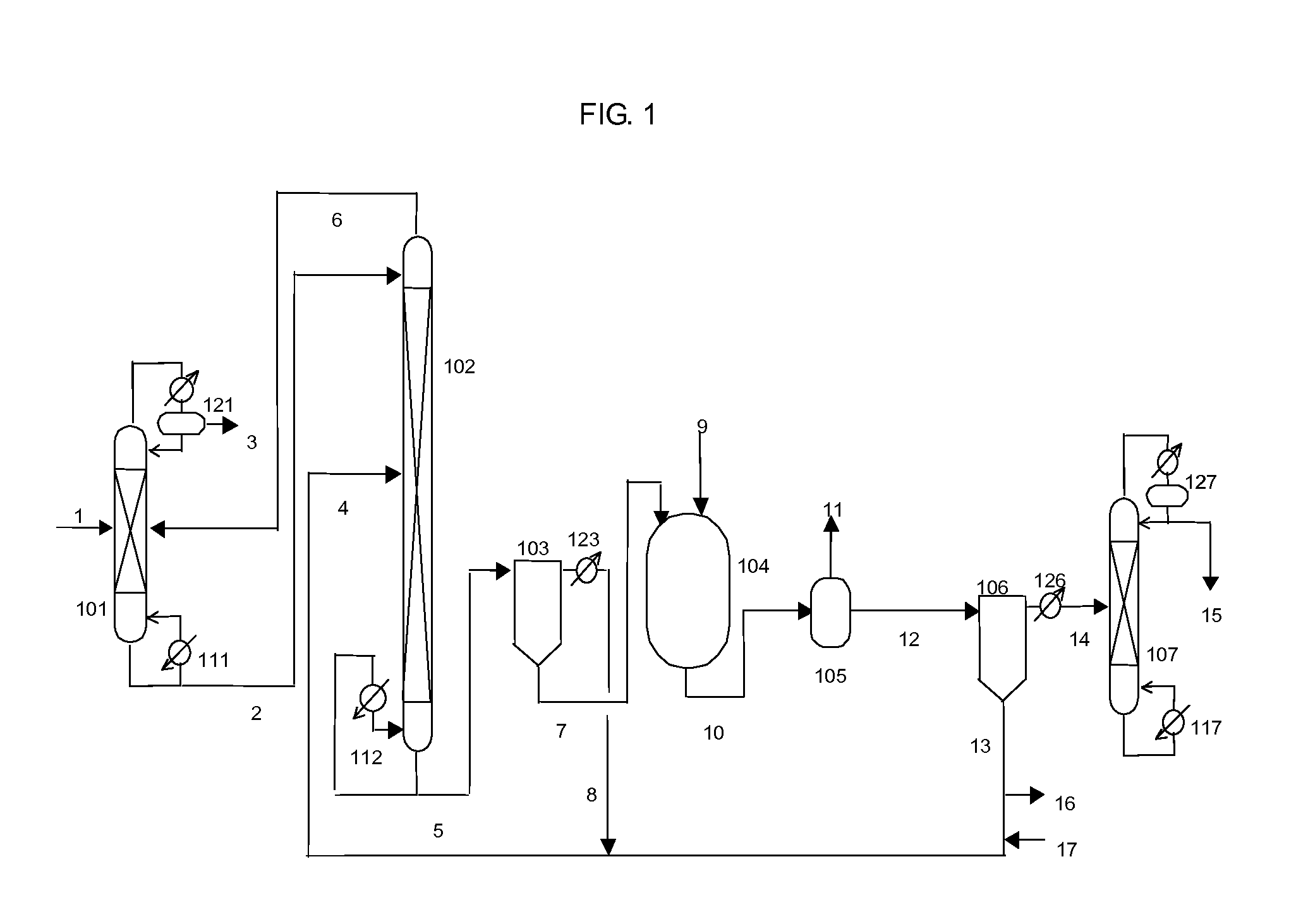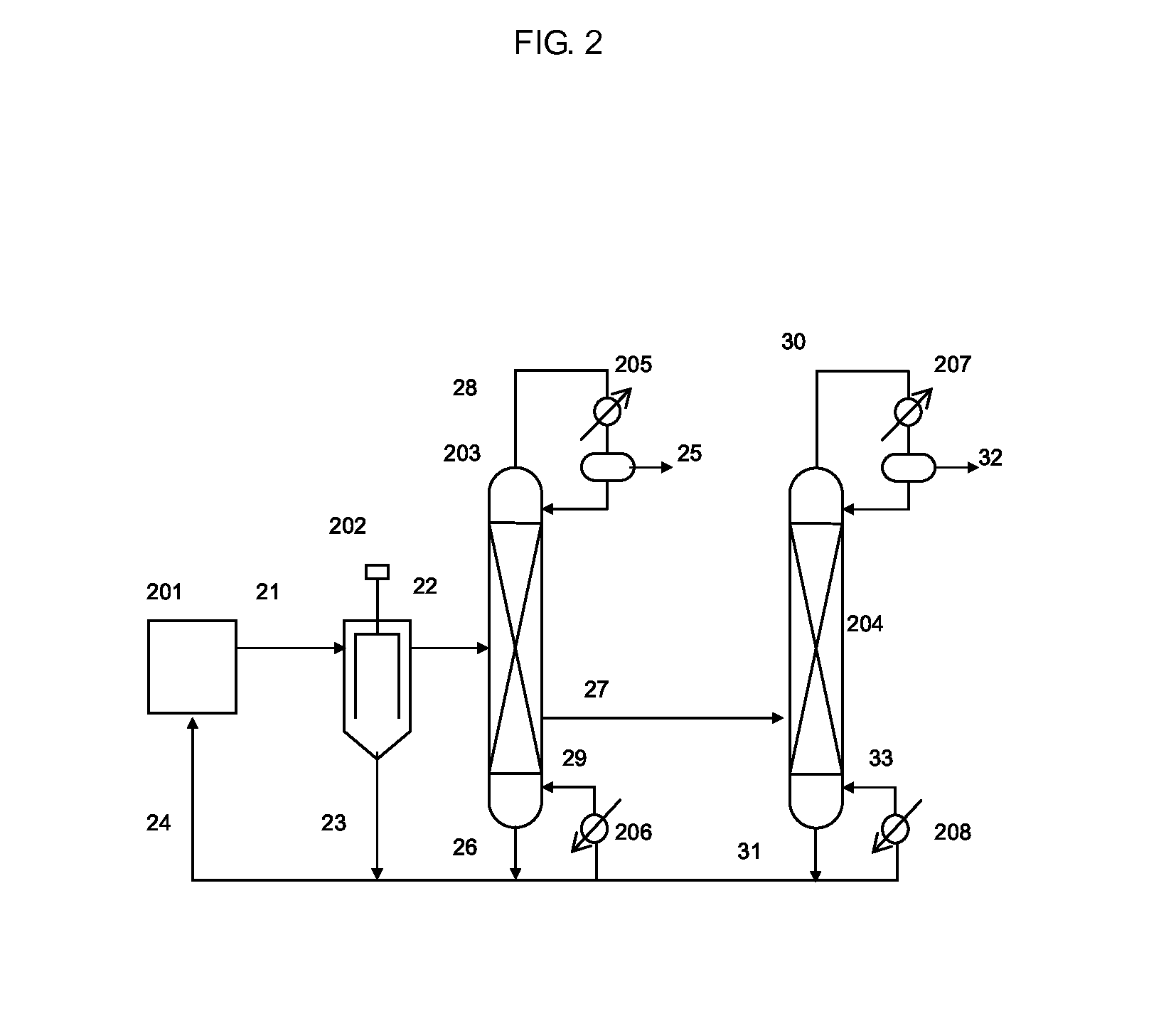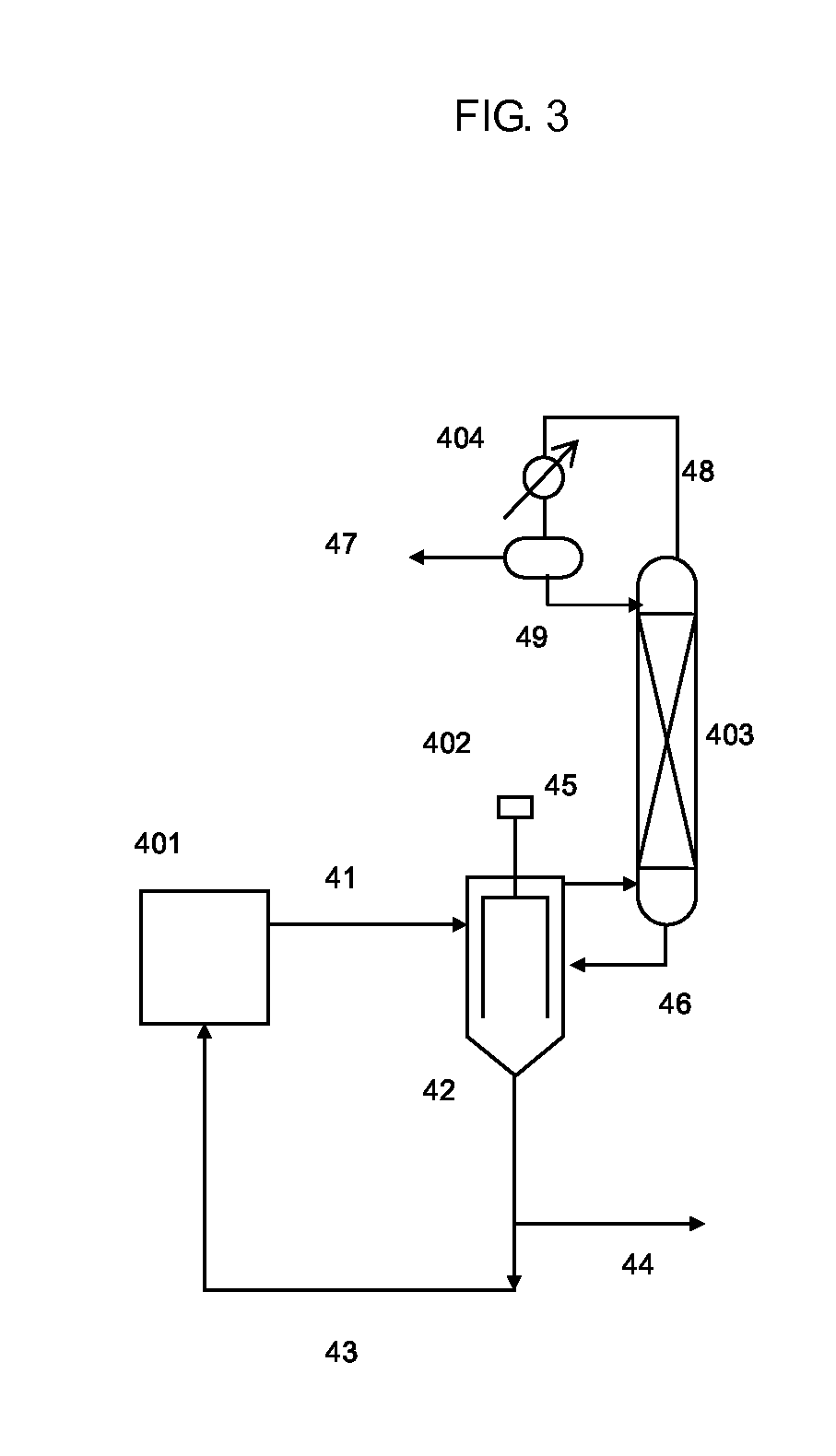Isocyanate production process using composition containing carbamic acid ester and aromatic hydroxy compound, and composition for transfer and storage of carbamic acid ester
a technology of carbamic acid ester and isocyanate, which is applied in the preparation of isocyanic acid derivatives, other chemical processes, organic chemistry, etc., can solve the problems of phosgene being extremely toxic, reducing the yield and affecting the weather resistance and heat resistance of polyurethane products. , to achieve the effect of inhibiting the thermal decomposition reaction of carbamic acid ester and efficient production
- Summary
- Abstract
- Description
- Claims
- Application Information
AI Technical Summary
Benefits of technology
Problems solved by technology
Method used
Image
Examples
example 1
Step (1-1): Production of Bis(3-methylbutyl) Carbonate
[0287]625 g (2.7 mol) of di-n-butyl tin oxide (Sankyo Organic Chemicals Co., Ltd., Japan) and 2020 g (22.7 mol) of 3-methyl-1-butanol (Kuraray Co., Ltd., Japan) were placed in a 5000 mL volumetric pear-shaped flask. The flask was connected to an evaporator (R-144, Shibata Co., Ltd., Japan) to which was connected an oil bath (OBH-24, Masuda Corp., Japan) equipped with a temperature controller, a vacuum pump (G-50A, Ulvac Inc., Japan) and a vacuum controller (VC-10S, Okano Seisakusho Co., Ltd.). The purge valve outlet of this evaporator was connected to a line containing nitrogen gas flowing at normal pressure. After closing the purge valve of the evaporator to reduce pressure inside the system, the purge valve was opened gradually to allow nitrogen to flow into the system and return to normal pressure. The oil bath temperature was set to about 145° C., the flask was immersed in the oil bath and rotation of the evaporator was start...
example 2
Step (2-1): Production of Bis(3-methylbutyl) Carbonate
[0293]Bis(3-methylbutyl)carbonate was produced using the same method as Step (1-1) of Example 1.
Step (2-2): Production of N,N′-hexanediyl-bis-carbamic Acid Bis(3-methylbutyl) Ester
[0294]A solution containing 31.3% by weight of N,N′-hexanediyl-bis-carbamic acid bis(3-methylbutyl)ester was obtained by carrying out the same method as step (1-2) of Example 1 with the exception of using 2039 g (10.1 mol) of the bis(3-methylbutyl) carbonate obtained in step (2-1), using 244 g (2.1 mol) of hexamethylene diamine, and using 20.3 g of sodium methoxide (25% methanol solution).
Step (2-3): Production of Composition
[0295]1097 g of a distillate were obtained by carrying out the same method as step (1-3) of Example 1 with the exception of using the solution obtained in step (2-2) and 3560 g of 2-phenylphenol (Tokyo Chemical Industry Co., Ltd., Japan) instead of 2,4-di-tert-amylphenol. As a result of analyzing by gas chromatography, the distillat...
example 3
Step (3-1): Production of Bis(3-methylbutyl)Carbonate
[0296]Bis(3-methylbutyl)carbonate was produced using the same method as Step (1-1) of Example 1.
Step (3-2): Production of N,N′-hexanediyl-bis-carbamic Acid Bis(3-methylbutyl) Ester
[0297]A solution containing 28.4% by weight of N,N′-hexanediyl-bis-carbamic acid bis(3-methylbutyl)ester was obtained by carrying out the same method as step (1-2) of Example 1 with the exception of using 2630 g (13.0 mol) of the bis(3-methylbutyl) carbonate obtained in step (3-1), using 291 g (2.5 mol) of hexamethylene diamine, and using 24.1 g of sodium methoxide (25% methanol solution).
Step (3-3): Production of Composition
[0298]2068 g of a distillate were obtained by carrying out the same method as step (1-3) of Example 1 with the exception of using the solution obtained in step (3-2) and 2401 g of 2,4-bis(α,α-dimethylbenzyl)phenol (Tokyo Chemical Industry Co., Ltd., Japan) instead of 2,4-di-tert-amylphenol. As a result of analyzing by gas chromatogra...
PUM
| Property | Measurement | Unit |
|---|---|---|
| Temperature | aaaaa | aaaaa |
| Temperature | aaaaa | aaaaa |
| Temperature | aaaaa | aaaaa |
Abstract
Description
Claims
Application Information
 Login to View More
Login to View More - R&D
- Intellectual Property
- Life Sciences
- Materials
- Tech Scout
- Unparalleled Data Quality
- Higher Quality Content
- 60% Fewer Hallucinations
Browse by: Latest US Patents, China's latest patents, Technical Efficacy Thesaurus, Application Domain, Technology Topic, Popular Technical Reports.
© 2025 PatSnap. All rights reserved.Legal|Privacy policy|Modern Slavery Act Transparency Statement|Sitemap|About US| Contact US: help@patsnap.com



